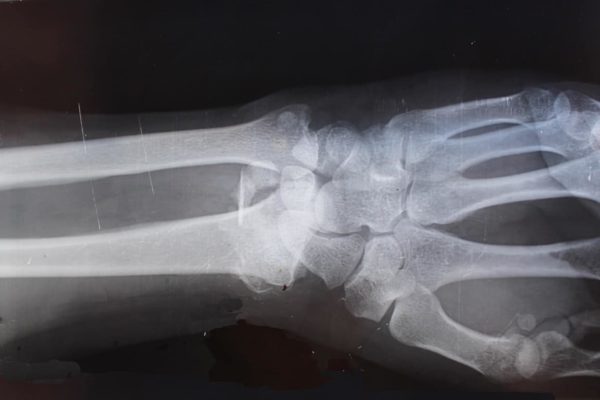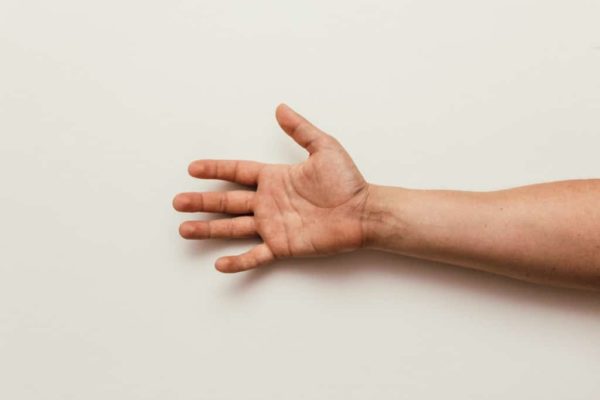Complex Regional Pain Syndrome is a rare, usually chronic (lasting longer than six months) pain condition that most commonly affects one limb, often after an injury.
It has been described in literature as early as the early 19th century, and according to data from the leading CRPS charity Burning Nights, there are 15,000 new diagnoses made a year in the UK. Whilst pain levels vary per individual, it remains the highest ranking disorder on the McGill pain index, reaching approximately 42 out of 50, sitting higher than childbirth and amputation.
According to NHS advice and guidance, 85% of people with Complex Regional Pain Syndrome experience a reduction in their pain and symptoms in the first 2 years.
What are the symptoms of CRPS?
CRPS is characterized by several symptoms, and is commonly diagnosed using the Budapest Criteria. The symptoms of CRPS can be any of the following:
- Strange sensations in the affected limb – it may feel as if it does not belong to the rest of your body, or it may feel bigger or smaller than the opposite unaffected limb
- Continuous burning or throbbing pain usually in your arm, leg or foot
- Pain from a stimulus which should not cause pain (allodynia)
- Muscle spasms, tremor, weakness and loss (atrophy)
- Alternating changes to your skin – sometimes your skin in the affected limb may be hot, red, and dry, whereas other times it may be cold, blue and sweaty
- Hair and nail changes – your hair and nails in the affected limb may grow unusually slowly or quickly and your nails may become brittle or grooved
- Joint stiffness and swelling in the affected limb (oedema)
- Tremors and muscle spasms or muscle tension (dystonia)
- Difficulty moving the affected body part
- Difficulty sleeping
- Small patches of fragile bones in the affected limb
The Budapest Criteria
As there is no specific test for CRPS, the Budapest criteria are used instead by clinicians to help in making a diagnosis. The Budapest criteria requires a patient to have at least one symptom in three of four categories. You can read more about the Budapest Criteria method of diagnosis here.



What are the origins of CRPS?
CRPS can stem from something as minor as a burn or needle prick, but usually symptoms begin after physical trauma such as a fracture, surgery or soft tissue injury. Rarely, symptoms can also develop after a stroke or heart attack, but the crux of this condition is pain that is entirely disproportionate to the severity of the initial injury. In more than 90% of cases, symptoms arise after a clear history of physical trauma or injury, and it is not uncommon for the pain to move from the area first affected by the trauma, and spread to the entire limb. For example, there are cases where trauma to a toe has led to CRPS symptoms in the feet and legs.
Those with the condition can describe a persistent “burning”, tingling sensation that can be similar to pins and needles or the feeling of someone tightly squeezing the affected area. The pain is described as debilitating and constant, and does not discriminate against age – although rare, young children have been diagnosed with the condition. With CRPS, some respond excessively to a trigger that others are unaffected by, such as what is observed in people with allergies, and the reason for this unfortunately remains unclear.
What actually causes CRPS?
In some cases, the sympathetic nervous system plays a part in whether or not someone develops CRPS, but a lot of the time, the exact causes remain unclear. CRPS most likely doesn’t have a single cause, rather multiple causes that produce similar symptoms.
RSD, CRPS I, or CRPS II?
CRPS I follows a physical injury or traumatic event such as a fracture or sprain but with no damage to the nerve, whereas CRPS type II happens after damage to a nerve in the affected limb and is sometimes referred to separately as causalgia. RSD stands for Reflex Sympathetic Dystrophy and is an outdated term used to describe type 1, although it has not fallen entirely out of use.
Treatment
Treatment involves 4 main areas, and research has shown it is most effective when started early – you should always see a doctor as soon as possible if you have pain that won’t go away.
Treatment will include a combination of physical therapy, rehabilitative care and psychotherapy, often along with a prescribed pain medication to help manage symptoms. There are usually several different specialists involved in treatment for CRPS, since the condition presents such complex challenges outside of the physical parameters of pain. Within the NHS, these people are usually occupational therapists, pain specialists, psychologists, physiotherapists, GP’s, social workers and employment advisors, and if you decide to participate in a study with us, you will also have access to our team of doctors comprising of experts in pain, anaesthesia and acting analgesics. Here, you can read more about the areas of expertise of our team. We also work very closely with your GP for the duration of the study to ensure you receive the highest level of care.
Research progress
Whilst the severity of CRPS should not ever be trivialized, there are reasons to be hopeful. We are living through an unrivalled period of scientific and technological advancement, and with every new study our understanding of chronic pain, why it exists, and how to treat it becomes clearer. In 2019, major milestones were reached in terms of pain understanding.
Gene-silencing treatment to reverse Porphyria
Last year, a clinical trial successfully reduced the number of agonizing Porphyria related attacks by 74%.
We discovered that weather affects how we feel pain
“The analysis showed that on damp and windy days with low pressure, the chances of experiencing more pain, compared to an average day, was around 20%.”
$2 million was granted in 2019 to fund non addictive painkillers
The researchers will build on previous research that suggests that turning off a small molecule, GPR160, could also turn off pain.
The way we think about pain has shifted beyond the biomedical
Mind-body therapies (MBT) and Cognitive Behavioral Therapy (CBT) attempt to combat the remaining two thirds of the problem of pain after the introduction of pain relief drugs. We now know that pain is never purely physical, and is instead biopsychosocial.
